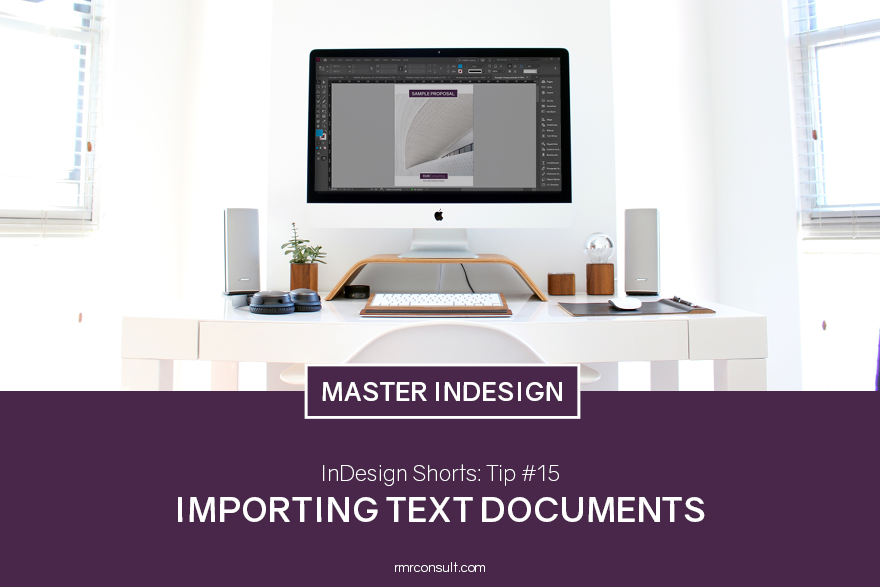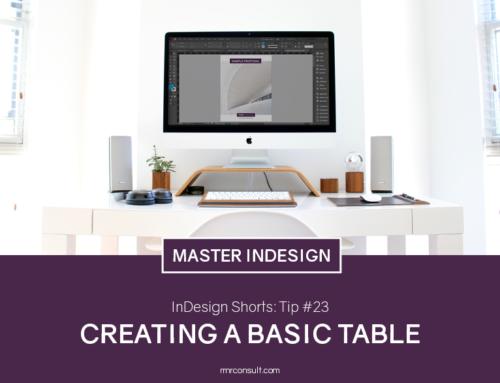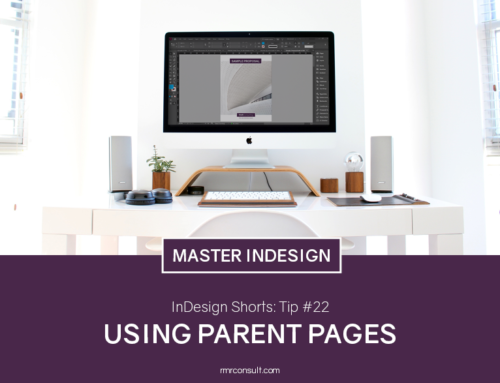InDesign Shorts: Tip #15 – Importing Text Documents
InDesign Shorts is a recurring series to help everyone of all levels master the ins and outs of the program and become more efficient designers. Got a burning InDesign question? Drop a comment below or join the LinkedIn group for more.
You know you can add images to an InDesign document (of course). But did you know you can also import text into an InDesign document? This is incredibly useful if one of your team members writes a lengthy narrative in Word with lots of specific formatting.
Sure, you could copy the text into your document in small chunks and make sure you’re bolding, italicizing, and underlining all the important bits. Or you can drop the entire file, pre-formatted, into your InDesign document. It will even import tables, though the formatting on these usually needs some fine-tuning once it’s placed in InDesign.
The trick is to save the standard .doc Word file as a Rich Text File (.rtf). Then ctrl + D, select the file and drop it into your InDesign document.
Tips and hints:
- All of the native formattings will import with your document. That means if the text is Calibri in Word, then it will show up as Calibri in InDesign.
- Just like images, if you update the text in the .rtf file, it will update in the InDesign document.
- This isn’t always foolproof, especially if the Word fonts and your InDesign fonts aren’t compatible (InDesign doesn’t have a ‘bold’ option, for instance, so you need to be using the bold version of a font).
- You can always import all of the text and use the eyedropper tool to format large chunks at a time if your formatting doesn’t come through quite right.






Leave A Comment